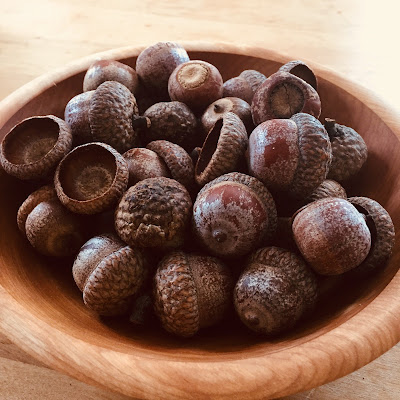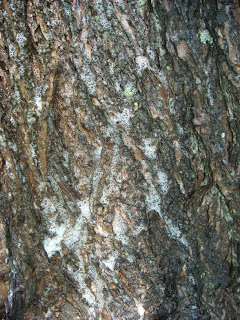Too Many Acorns!
By Rebecca Roy, Conservation Education Coordinator
Recently I wrote a blog article about white
pine cones, which we are seeing in really high numbers this year. In that
article I mentioned that some other trees are producing way more seeds than
typical. One of those are our beautiful oak trees. The drought laden, super hot
weather in summer 2016 is responsible for this phenomenon too.
Oak trees come from two family groups--the red
oak group, and the white oak group. Red oak trees have leaves with pointed
lobes, while white oak leaves have rounded lobes. Red oak group trees are the
most common oaks in Vermont.
Like white pines, red oak trees take two years
to develop seeds. White oak trees develop acorns in one single season. So one
factor in this really numerous acorn year is the trees all over producing as a
reaction to the 2016 growing season, a very stressful and challenging growing
season for all our trees because of the drought.
There is more to this story with oak trees,
however. Oak trees have a pattern of acorn growth called masting. Acorns are a wonderful
food source for many wildlife species--squirrels, Blue Jays, Turkeys, deer,
mice, and bear all enjoy these nutrient rich tree nuts. In fact, wildlife enjoy
this food source so much, that they would easily eat all the acorns every year
given the opportunity. A single Blue Jay can cart away and store over 5,000
acorns a season! Trees have adapted a technique of having a heavy mast year
every 2-5 years or so--which is a season where they produce way more acorns
than normal. This heavy mast year is followed by years of more meager acorn
production.
 These mast years drastically affect wildlife
populations--the numbers of mice, squirrels, and other small mammals are kept
in check by many years of normal or meager acorn production. When a very heavy
mast year occurs, the tree produces way more acorns than any wildlife in the
area could ever consume. Some oak trees produce 10,000 acorns in a heavy mast
year. This ensures some acorns will be able to thrive and grow into new oak
trees. Over time natural selection has favored trees producing these cycles of
acorns.
These mast years drastically affect wildlife
populations--the numbers of mice, squirrels, and other small mammals are kept
in check by many years of normal or meager acorn production. When a very heavy
mast year occurs, the tree produces way more acorns than any wildlife in the
area could ever consume. Some oak trees produce 10,000 acorns in a heavy mast
year. This ensures some acorns will be able to thrive and grow into new oak
trees. Over time natural selection has favored trees producing these cycles of
acorns.
Trees expend lots of energy to produce the
large number of acorns for heavy mast years. It takes so much energy in fact,
that if you count the growth rings on a oak stump, you can determine heavy mast
years because the rings are very narrow in those years. Oak trees do not grow
very much in size during the years great energy is spent of acorn production.
One interesting thing I observed from a
scarlet oak in my yard is that not only are there a much larger number of
acorns this year, but the acorns themselves are also much bigger than normal.
Take a walk in the woods near your favorite oaks and check out the acorns. I
collected some to put under my bird feeders once the snow is a little bit deeper.
Speaking of that, some old folklore predicts a snowy, cold winter after a heavy
acorn mast year. This phenomenon is not scientifically proven, but fun to think
about as I wax my skis.


.jpg)
.jpg)
Comments
Post a Comment
Feel free to let us know what you think.